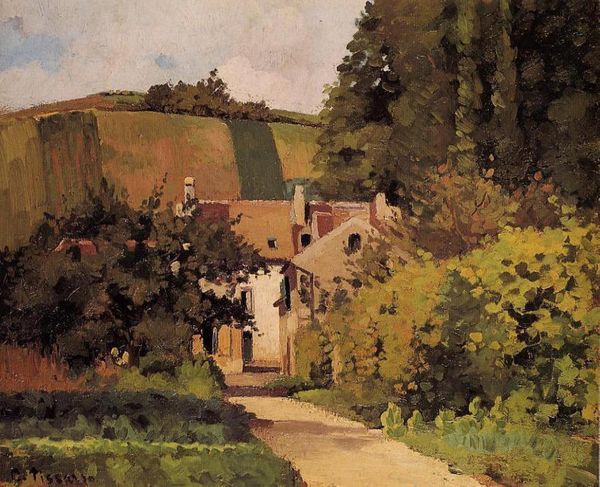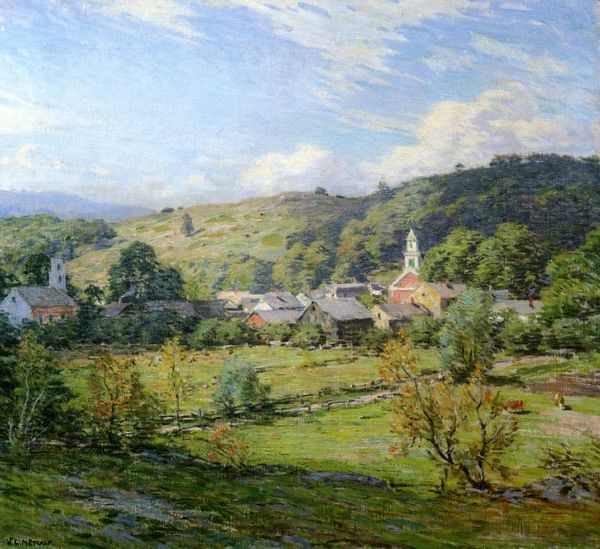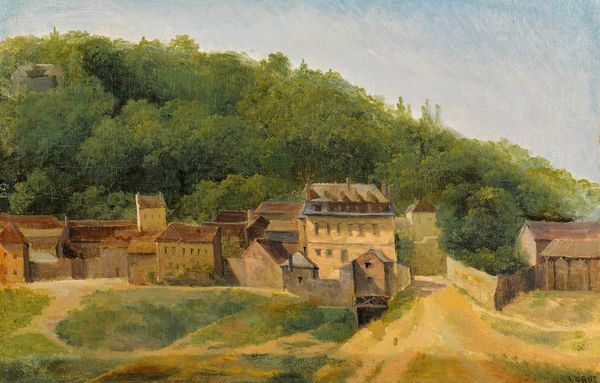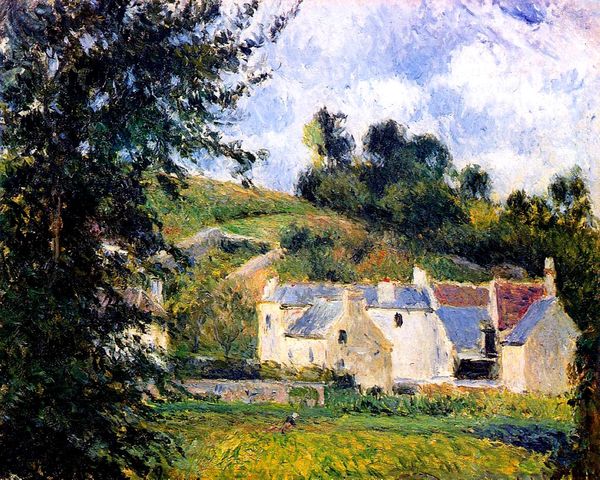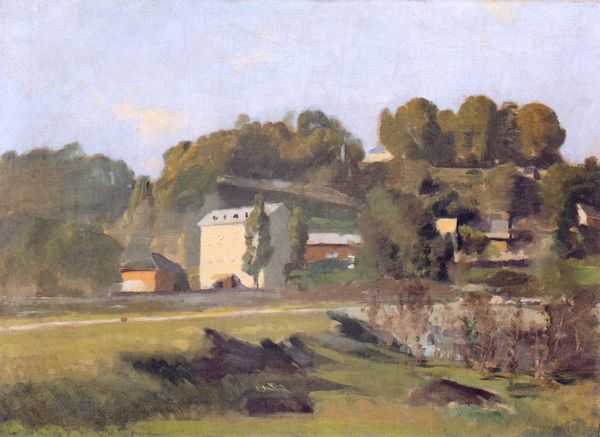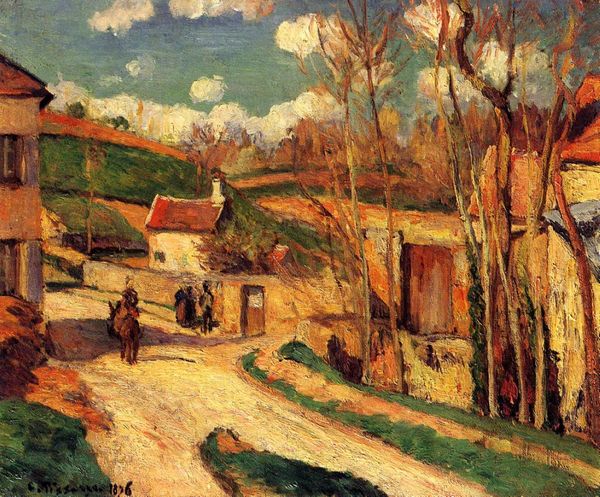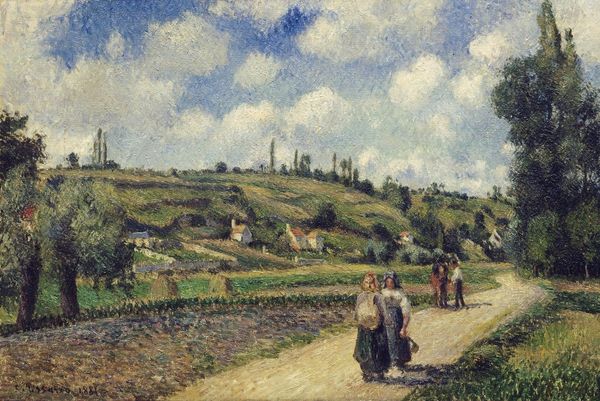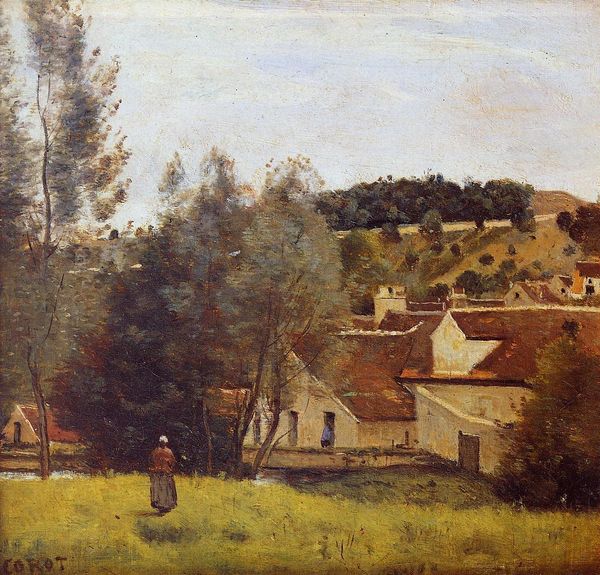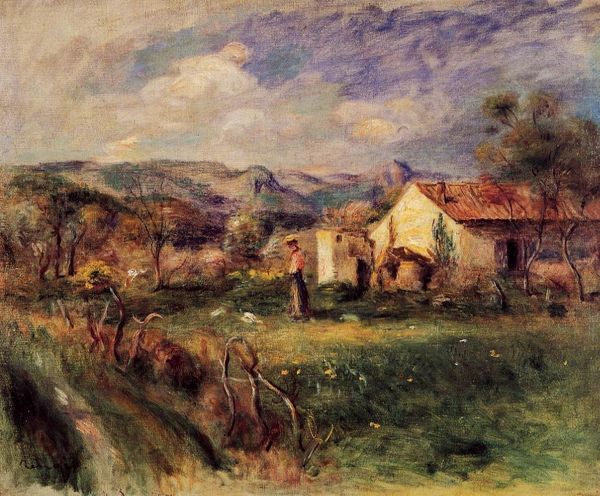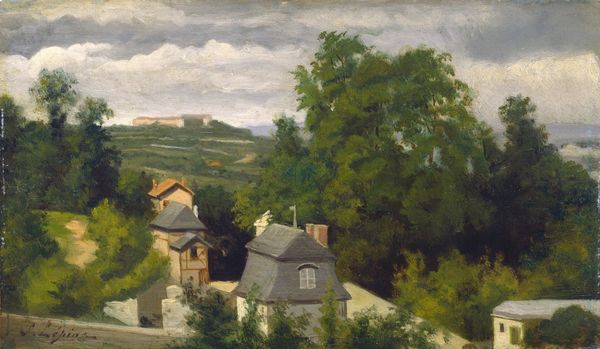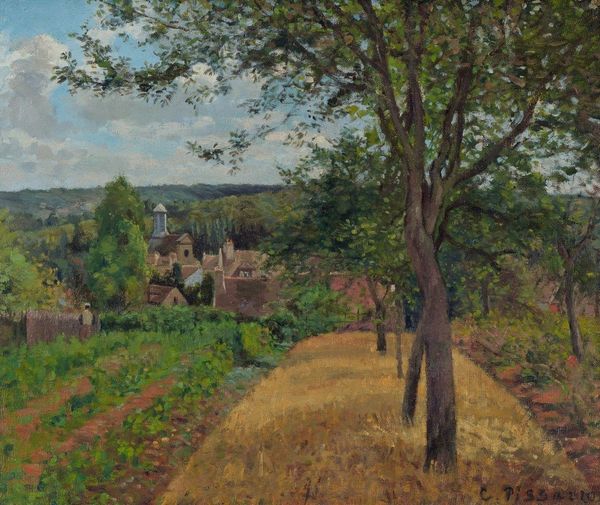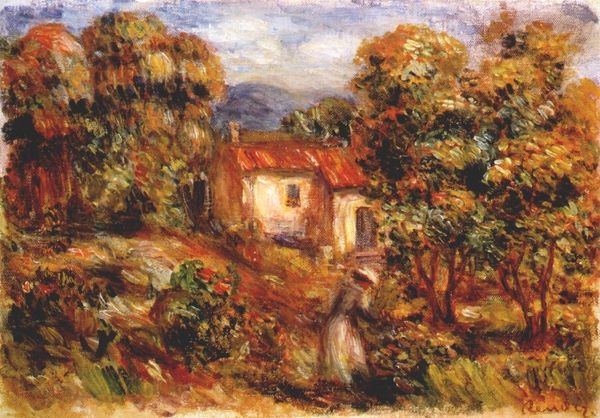
The Hermitage at Pontoise 1874
0:00
0:00
camillepissarro
Oskar Reinhart Foundation, Winterthur, Switzerland
Copyright: Public domain
Curator: Looking at Pissarro's 1874 painting, "The Hermitage at Pontoise," held at the Oskar Reinhart Foundation, I'm immediately struck by how serene the entire scene appears. Editor: Yes, the way the light filters through those trees in the foreground certainly creates a tranquil mood. There’s also an interesting compositional tension here, isn't there? The verticality of the trees is set against the horizontal sprawl of the village. Curator: Indeed. Pissarro’s landscape is charged with a new perception. This work really embodies the shift towards Impressionism's embrace of modern life. The choice of depicting Pontoise—a suburb experiencing industrial and social changes—places art squarely within the era’s evolving societal landscape. Editor: From a formalist point of view, observe how he renders those socio-political changes. Notice the use of short, broken brushstrokes. He's dissolving the solidity of form and playing with light and color in a very systematic, almost scientific, way. It almost obscures, rather than clarifies, the forms within the village itself. Curator: Absolutely, but it’s that very obscuring that speaks volumes! The loose brushwork mirrors the fluidity and impermanence of the modern experience. The woman and the grazing horse are placed along the lane heading toward the village almost as incidental features of the industrialized society that places production, market and property, over individuality and simple community. Editor: I see what you mean, the human element is somewhat dwarfed here by the landscape, though that contrast could as easily symbolize humankind’s intrinsic and necessary connection to nature rather than its displacement from it. Regardless, notice that even the earthy pigments in the buildings' stone and roofs seem to be in subtle chromatic harmony with the broader composition. Curator: Agreed, but consider, too, how Pissarro uses the very act of painting "en plein air"— outdoors on location—to make a statement about art's role. Editor: A potent claim, considering the formal harmony found even within its political motivations. Curator: The context definitely enriches the viewing experience for me. Editor: And for me, the meticulous breakdown of light and color enlivens the canvas itself.
Comments
No comments
Be the first to comment and join the conversation on the ultimate creative platform.

